Women and female brewers have a long history in the story of beer.
In the dawn of civilized brewing, making beer was a woman’s job. It continues to be so in indigenous cultures around the world and is once again becoming an important workplace for women in the U.S., Canada and Europe.
Let’s start at the very beginning …

Early Evidence Found in China
Dr. Patrick McGovern is the world’s preeminent expert on ancient alcoholic beverages, as well as the scientific director of the Biomolecular Archaeology Laboratory for Cuisine, Fermented Beverages, and Health at the University of Pennsylvania MuseumOpens in new window. McGovern notes that in mankind’s earliest days, “While men were out hunting, women were out gathering the ingredients they needed to make other foods and drink to go with the wooly mammoth or mastodon.”
McGovern explains the female’s role became even more critical once agriculture took hold because fermentation was often part of the food processing. Some of this fermentation was initiated by women chewing the grains to start the process.
(READ: BA Launches a Seal for Independent Brewers)
The earliest documented beer evidence was found in Jiahu, China, dating 7000-5600 BCE. Dogfish Head Craft Brewing makes a Chateau JiahuOpens in new window. McGovern consulted with the brewery on the project, doing analyses to determine the beer’s contents of rice beer, honey mead and hawthorn fruit wine.
Rice beer, according to Chinese legend, was first brewed by Yi Di, the wife of Yu the Great. McGovern writes that in areas of Japan and Taiwan, “You can still find women sitting around a large bowl, masticating and spitting rice juice into the vessel as they prepare the rice wine.”
The Ancient Beer Goddesses
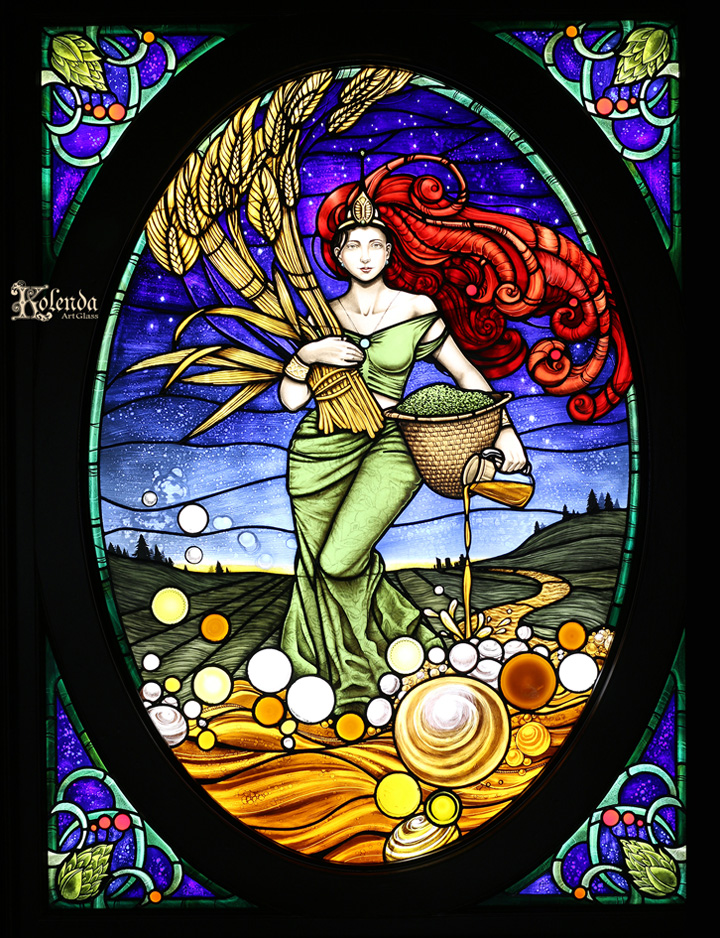
The oldest extant beer recipe, written in cuneiform, dates to ancient Mesopotamia, around 1800 BCE. The Hymn to Ninkasi, the Sumerian goddess of brewing, is both a song of praise to Ninkasi and an ancient recipe for brewing.
While written down around 1800 BCE, the hymn is probably much older since archeological evidence for brewing the beer goes back to 3500-3100 BCE at the Sumerian settlement of Godin Tepe in modern-day Iran. In ancient Babylon women were bakers/brewers and also distributed the beers.
According to the preeminent beer historian Alan Eames, another Sumerian beer goddess was Siris, who watched over the daily ritual of brewing. Eames notes that only women were allowed to brew and their beers included all manner of strange ingredients such as spices, peppers, tree bark and powdered crab claws. Sounds much like modern craft brewers — except for the powered crab claws part.
Perhaps the most interesting of these brewsters was Kubaba. While the circumstances of her elevation are unknown, Kubaba is the only female listed in the Sumerian King List, compiled around 2100 BCE, and probably the first recorded woman ruler. The Sumerian King List names her as the woman tavern-keeper. Legend says she reigned for 100 years (which may be a stretch).
Eames also notes that women ran the beer halls and taverns, with the price of beer being raw grain. The Babylonian Code of Hammurabi, from about 1500-2000 BCE, harshly states that if a tavern owner (a woman) does not accept barley as the price of beer, but if she receives money and the price of the drink is less than the that of the barley, she shall be convicted and the judges shall throw the brewster into the water. It also states that if conspirators meet at a tavern but are not captured then the tavern-keeper shall be put to death. Ouch.
(LEARN: CraftBeer.com’s Big Beer Glossary)
Ninkasi and Siris were not the only ancient brewing goddesses. Nearby Egypt had Tenerit, the goddess of beer, and Hathor, the goddess of drunkenness. Egyptian hieroglyphics show women both brewing and drinking beer.
Early Brewing Traditions in Europe
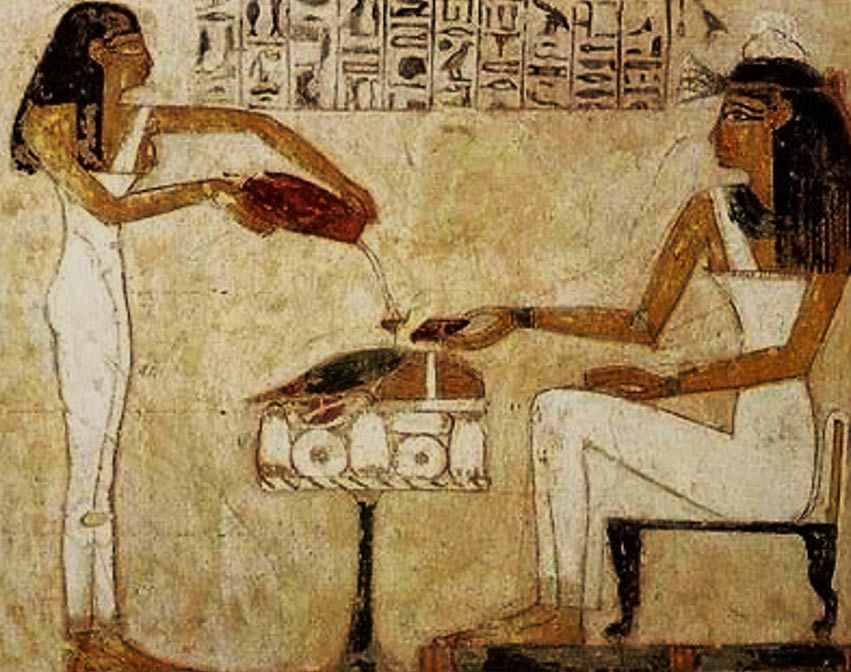
From the Middle East beer brewing spread through Egypt to Greece, where beer was a distant second favorite to strong wine; to Rome where people also preferred strong wine; and throughout Europe.
The Romans reported that traditional German societies drank ale produced by women, mainly made from fermented honey. Women in the migrating Germanic tribes often brewed in forests to avoid pillaging raiders, some of whom were Vikings.
Based on archaeological finds in Northern Bavaria, Germans were brewing beer as early as 800 BCE. This continued for centuries after the Christian era, and once again brewing was the domain of the hausfrau.
From the 8th through the 10th century Vikings rampaged throughout North Africa and Europe. Viking beer was called Aul from which we obtain the name “ale.”
(MORE: Get to Know 75+ Popular Beer Styles)
According to Eames, “Viking women were the exclusive brewers in Norse society and law dictated that all brewhouse equipment remained the property of women.”
A record in England shows that women probably were the vast majority of brewers until the 13th century. These women, known as alewives, brewed beer in their kitchens.
Eames writes that, “Beer remained an essential diet and selling surplus beer became important to the economy of most households. When a housewife had extra beer to sell, an ale-stake — a long handled pole or broom handle — would be placed over the front door or in the road.”
Often there was a garland of hops atop the broomstick.
This marker continues to be seen throughout the world, especially in indigenous societies and probably is related to the brewer’s star which was hung outside pubs in Germany when fresh beer was available.
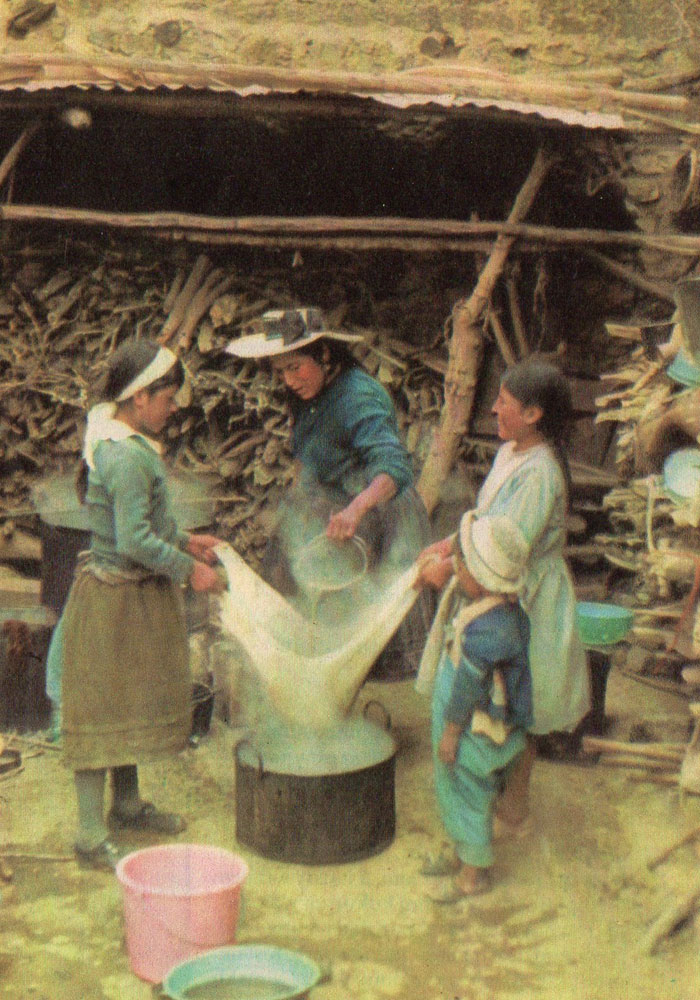
One of the regions where similar flags or notices are put out when beer is ready is Peru. The local corn-based Chicha beer is made in small homes and batches and a flag is displayed out front when ChichaOpens in new window is available.
A friend from our local homebrew club, who toured the Inca Trail, reports that she went off on her own for part of a day to find the local Chicha beer: “On that last day… I went for a long walk. I ended up in a village and knocked on a door that was flying the flag. When I walked back to the spa, I noticed another woman was actually making Chicha on the road and selling Chicha she made a few days earlier. This Chicha was very different because the natural microbial mixture was most likely different.”
Later her tour guide took her to a Chicha brewing friend and she reports she was told that the women enjoy the whole interaction because, “The men drink and the women laugh at them when they act silly.”
She also relates that virtually the same story exists in Nepal, according to a friend who taught her how to brew Chang, the beer of the Himalayas. Clearly, the brewing responsibility in indigenous societies comes with a bunch of societal fun for the brewing wives.
(RECIPES: Hundreds of Ways to Cook with Craft Beer)
A Shift from Women to Men
Several events evolved over time, conspiring to transfer the art of brewing from women to men.
Hildegard von Bingen, one of the great women in all of history, was a German abbess in the early 12th century. She was a consultant to popes and emperors, a writer of sacred music and madrigals, a philosopher and author of numerous scientific and medical writings.
Her Physica Sacra pharmacopeia was the first written reference to the preservative benefits of hops. This breakthrough allowed beer to last longer and, among other factors, led to larger breweries.
A second was the growth of monasteries which served as safe hotels and inns for weary travelers. That safety included serving beer rather than the local water which often was polluted. Much of the beer profits went to help run the monastery just as it is in today’s European monastery breweries. The monks became quite proficient at brewing and essentially initiated brewing as a profession.
(READ: 7 Breweries Worth a Detour)
The Black Plague in the 1400s was another turning point. With the attendant labor shortage wages increased and the financial ability to buy ale, which was safer than water (and more tasty), sharply increased. Brewing moved from the home to larger establishments.
As it became commercialized it segued into the hands of men who had the financial and legal resources to develop the growing industry. At the time, married female brewers had few legal rights and unmarried women had little capital.
Brewing originally did not involve much education, apprenticeship training or land, as long as it was confined to the home — but that changed.
The ale market changed from being dominated by single and married women into one that was commercial, professional and male-governed. By the 16th century in England and Germany, guilds also centralized and regulated brewing more heavily, which further contributed to the decline of women throughout the trade (although there were some guild women).
By the 18th century, women brewers seem to have largely disappeared from the profession — though many still served as tavern-keepers and often brewed the ales they served. While this may seem like a romantic notion, it was very hard work and often done out of necessity — and frequently by widows who needed the income.
Female Brewers Begin Making Inroads
In Europe in more modern times there have been inroads for women in the brewing industry.
Perhaps the most notable person is Franciscan Sister Doris of the Mallersdorf AbbeyOpens in new window in Bavaria. Mallersdorf is one of the few brewing monasteries in Europe and perhaps the only nunnery.
Sister Doris began her brewing apprenticeship in 1966. She became the brewmaster in 1975, taking over from another sister who had been brewing there since the 1930s. Like St. Brigid, the second most famous saint in Ireland, Sister Doris is renowned for converting water in beer.
(TRAVEL: Beercation Guides)
More recently Anne-Françoise Pypaert became the first female Trappist brewmaster. Yes, that reads correctly. She is the brewmaster at the world famous Orval Trappist monasteryOpens in new window.
While she was the only woman at Orval in 1992 when she was hired, the brewery now employs eight other women: two in the lab, one in Research and Development, four in the office, and one in the cheese factory.
Brewmaster Pypaert tells us, “The feminization of brewers helps to bring a certain nobility to the beer. Beer is no longer a product intended only for men, but also for women who enjoy it more and more.”
Similar things are happening in England. Sara Barton opened her own brewery, aptly called Brewster’s Brewery, in 1997. In 2013 she was named England’s Brewer of the Year.
Another woman, Emma Gilleland, was the first female head brewer in EnglandOpens in new window and now is the director of supply chain for Marston’s Brewery, the leading independent brewery in England. Gilleland oversees the brewing and distribution of over 60 beers from five Marston breweries including the beers using the famous Burton Union system.
Marston’s, the only brewery in England still using Burton Unions, was described to us years ago by a brewer at the time as “The cathedral of British brewing.”
The increased visibility of these women and others has played a big part in attracting other women, many in various aspects of the industry.
(LEARN: Beer 101 Online Course)
Women Brewing in Early America
In the New World, colonial and subsequent Americans followed their homeland traditions. Early colonial women continued to brew for family and friends in their kitchen brewery.
While this changed in the cities with the growth of regional breweries, in rural areas it remained the same for a long time. These women brewed with what was available to them including corn, pumpkins, oats, wheat and honey.
America has a similar history to England. As brewing became a commercial enterprise, men dominated the trade. However, there were still some women involved in the industry. Mary Lisle was the first recorded but unofficial brewster in the colonies. She inherited her father’s brewery, the Edinburgh Brewhouse, in 1734. Her sister, Elizabeth, inherited his malt house. Mary ran the brewery until 1751 when Robert Steel bought it.
As families moved to the cities and the local breweries grew, refrigeration and industrialization essentially ended women’s involvement in the brewing system. Prohibition did not help and there were few small breweries for a long time after the passage of the Volstead Act and the 21st Amendment to the U.S. Constitution ended Prohibition.
(READ: Brick Store Pub Reflects on 20 Years as a Beer Bar)
American Women Among the Craft Brewing Pioneers
Women have been among the pioneers in the craft beer resurgence beginning in the 1980s and have attracted an increasing number of women to the craft brewing industry.
Women such as Mellie Pullman (Schirf), Carol Stoudt (StoudtsOpens in new window), and Teri Fahrendorf (Steelhead), three of the first women brewers, and Kim Jordan (New Belgium), Irene Firmat (Full Sail), Deb Carey (New Glarus), and Marcy Larson (Alaskan) who helped open some of the early breweries and served in numerous capacities other than brewer.
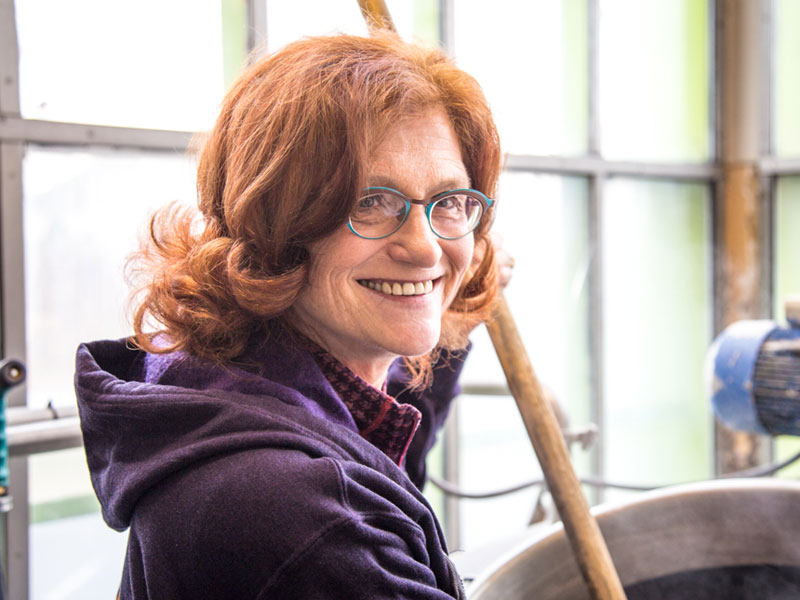
Deb Carey’s page on the New Glarus websiteOpens in new window says, “She does everything except brew beer.”
The trailblazing continues with people like Andrea Stanley who opened one of the first craft malteries in 2010Opens in new window. She also serves as president of the craft maltsters guild.
Several of these women mention the difficulty of raising funds to open a brewery, but mostly because the idea of making craft beer in the 80s and 90s was still foreign to a lot of people.
“Everyone just thought we were crazy for wanting to build a brewery,” Irene Firmat says. “It was not a woman’s issue.”
And it was hard work. Kim Jordan talks about “serving beers on Thursday, Friday and Saturday, delivering a newborn son the following Wednesday, and opening a new brewery the subsequent Monday.”
(VISIT: Find a U.S. Craft Brewery)
Does the Gender Gap Exist?
These pioneers say that they generally have not encountered sexism in the craft brewing world. Kim Jordan tell us, “Craft brewers tend to be more progressive and open-minded.”
Andrea Stanley tells us she’s had a similar positive experience.
“In seven years I never had a bad word from anyone in the craft industry,” Stanley says. “Men in craft brewing are willing and want to support.”
Granted, this isn’t the case for everyone. When Fahrendorf was first looking for work as a brewer, she remembers getting questions like, “Can you lift a 50-pound stack up the stairs?”
She moved on with determination and help from other industry people.
Mentoring a New Generation of Women in Beer
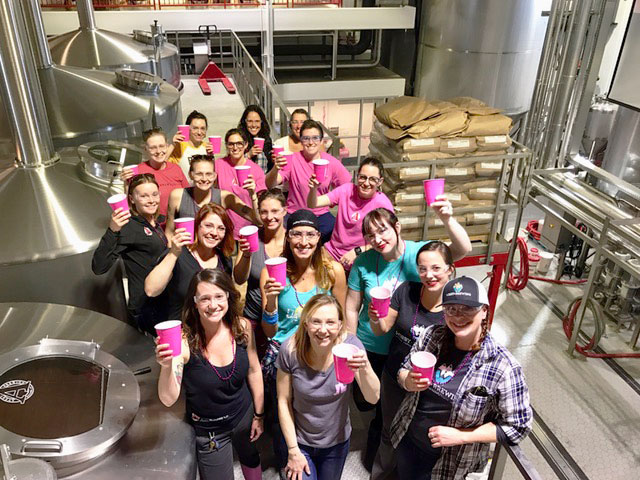
Most often their industry mentors were men since there were few women brewing at the time. Sometimes the mentors merely provided moral support and encouragement. Fahrendorf remembers when Paul Shipman, the founder of Redhook Ale, told her that he did not have any openings but, “One day you will be a brewery owner or brewmaster.”
Years later he does not remember the experience, but Fahrendorf certainly does.
Many of the women pioneers are now mentors themselves.
Stanley is working to get women on the board of the maltsters guild. She’s also working with other women to do the same for the craft industry as a whole.
Among the more ambitious and largest such program is the Pink Boots Society (PBS). When Fahrendorf took time off in 2007 to drive across the country brewing at various places, she found at least 60 women brewers asking at different breweries, “Are there others like us?”
She realized they had no connections.
(READ: 2017’s Great American Beer Bars)
She eventually developed a list of the women brewers which became the start of the PBS. PBS works to, “Assist, inspire, and encourage women beer professionalsOpens in new window through education.” From the original 60 members there now are over 30 chapters across the world with more than 2,000 members from all aspects of the industry.
Fahrendorf also helped organize Barley’s Angels, a group for women who are interested in craft beer but not brewing. Barley’s Angels works with breweries, brewpubs, restaurants, alehouses and other places “to advance the female consumer craft beer enthusiast, resulting in increased patronage and revenue from women, while encouraging education and interest in craft beer among this often under-recognized demographic group.”
While mostly in the U.S., there are now more than 100 chapters around the world.
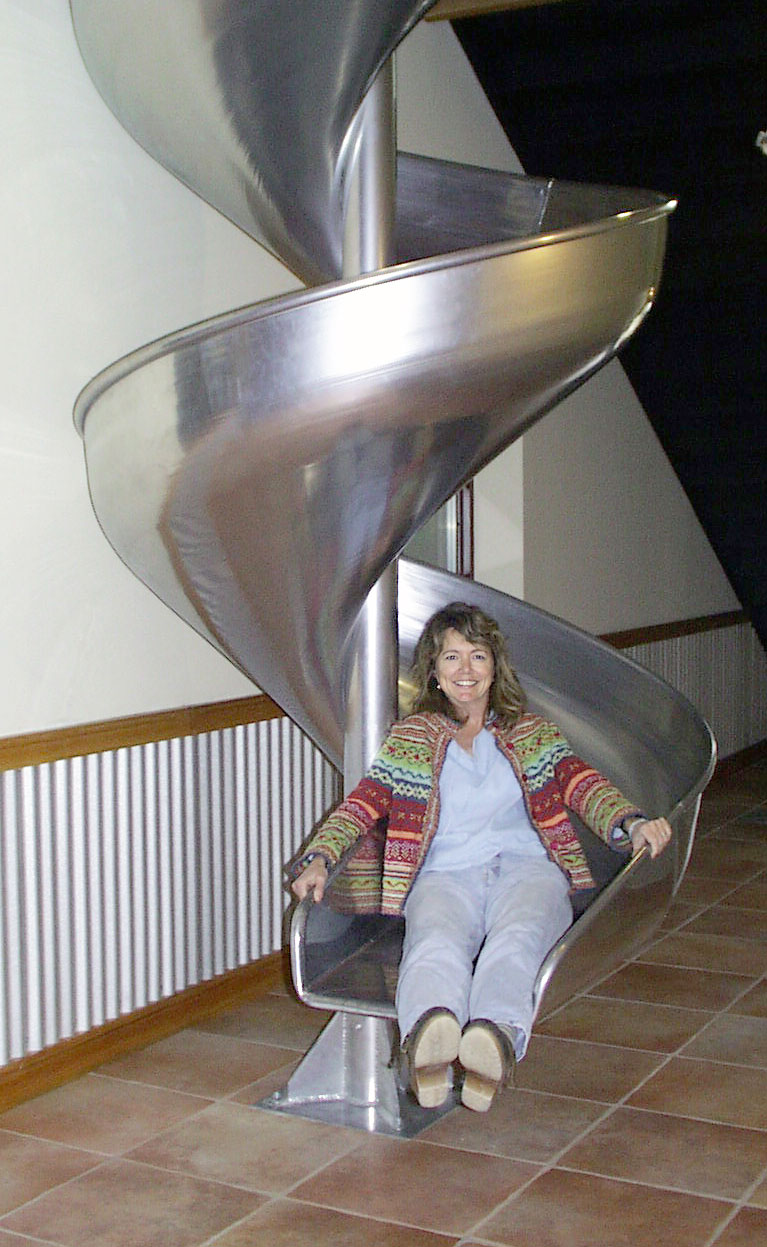
Advice to the Next Generation of Women in Beer
Jennifer Glanville, a brewer at Boston Beer/Sam Adams, thinks she has been called a pioneer “because I survived this long.” When she met Sister Doris at Mallersdorf she says: “We talked about beer and brewing, not about women in brewing.”
“We joke that brewers’ events are the only place where there is not a line to the women’s room,” Irene Firmat says.
Fahrendorf relates that when she started brewing she often did not go on trips because there was no one to share a room with.
(READ: Brewers are Fascinated with Foraged Beers)
That old norm clearly is changing, but there still is work to be done, and these pioneers have advice for women starting in brewing.
Firmat: “Feel strong and empowered. We have a better palate. Have a sense of confidence without expecting conflict.”
Stoudt: “Knowledge helps gain respect.”
Jordan: “Make sure you love it and work hard.”
Fahrendorf: “If you become discouraged, don’t give up. Be stubborn. If you don’t get a particular job then go elsewhere, be amazing, and make them jealous. When you get 5-10 years down the road stop thinking about yourself and become a mentor to others.”
At this point, Ninkasi probably is looking down from the pantheon of beer goddess and smiling.
CraftBeer.com is fully dedicated to small and independent U.S. breweries. We are published by the Brewers Association, the not-for-profit trade group dedicated to promoting and protecting America’s small and independent craft brewers. Stories and opinions shared on CraftBeer.com do not imply endorsement by or positions taken by the Brewers Association or its members.
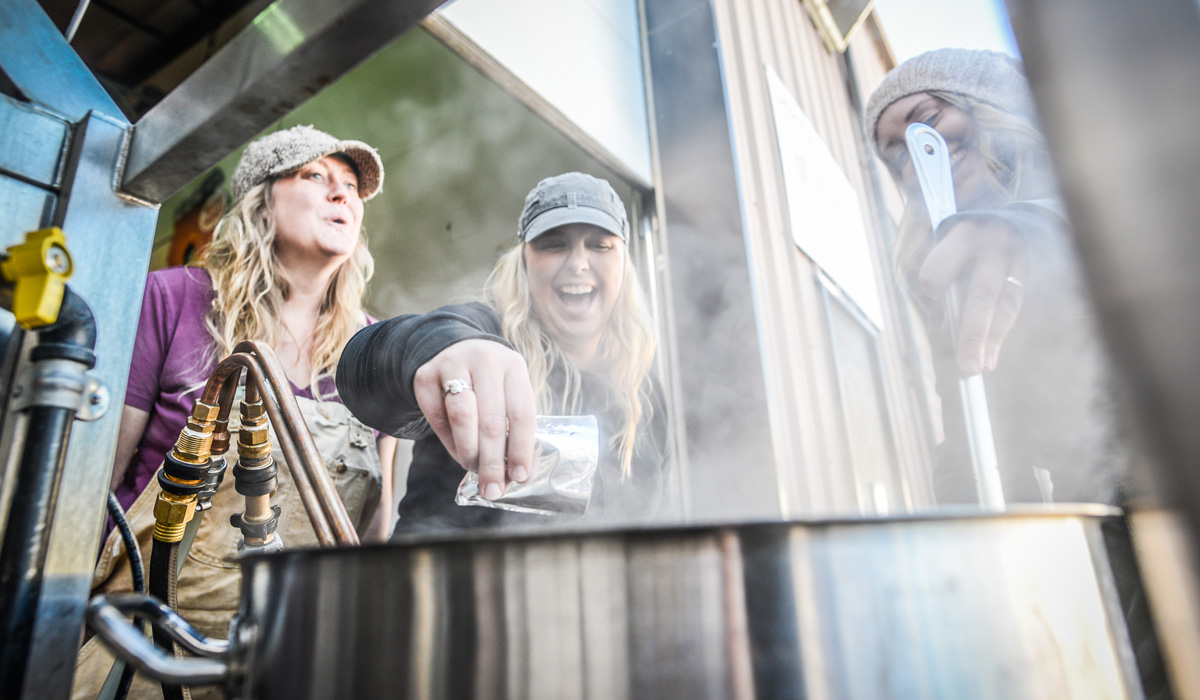

Share Post